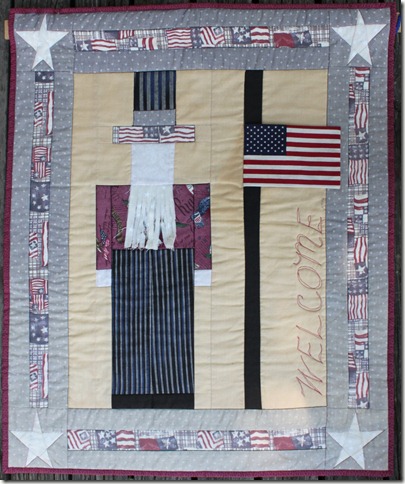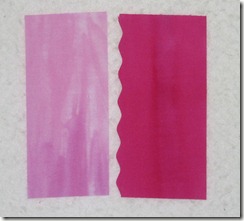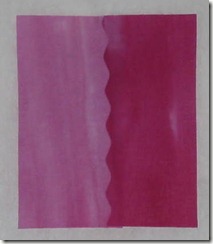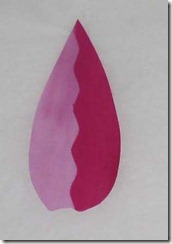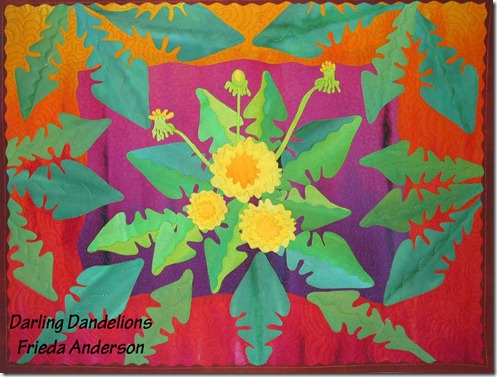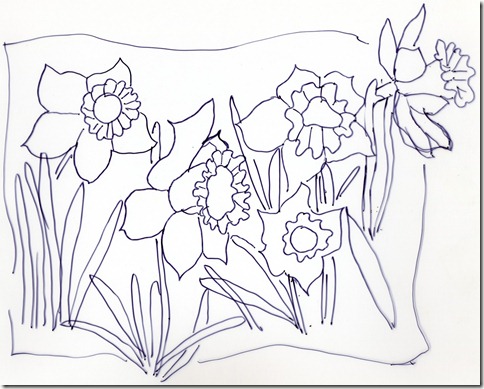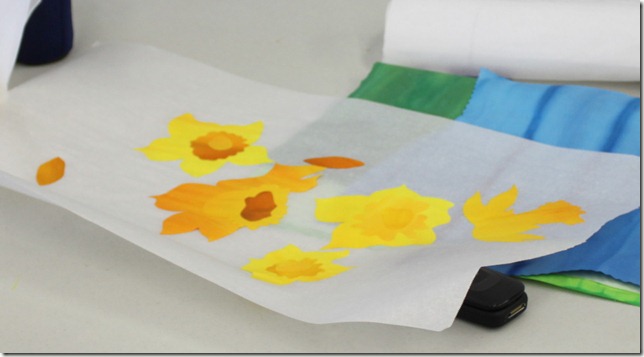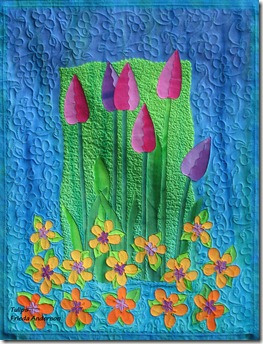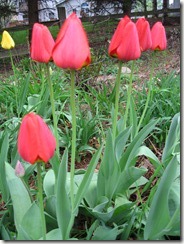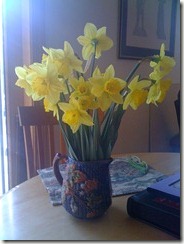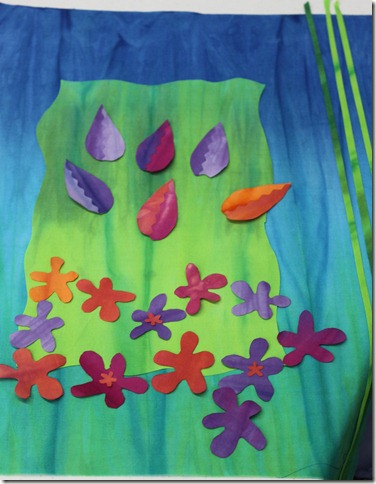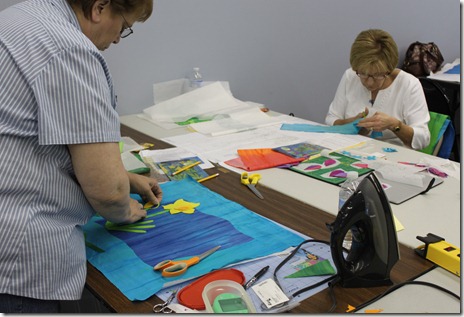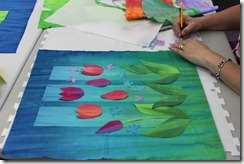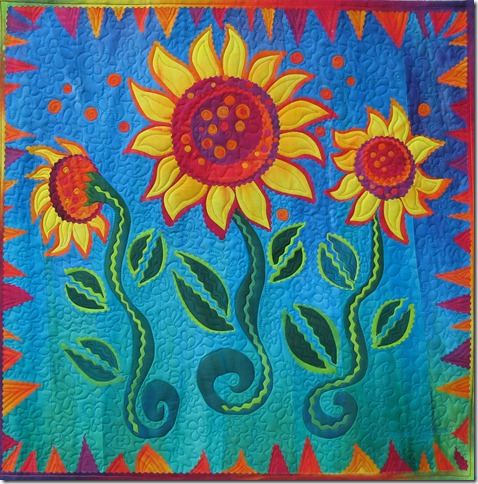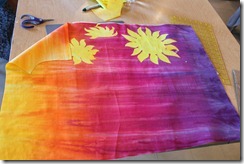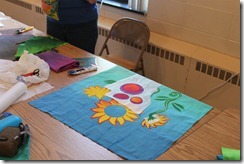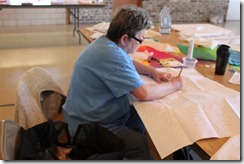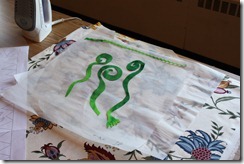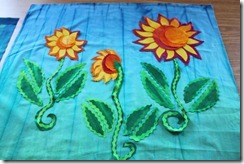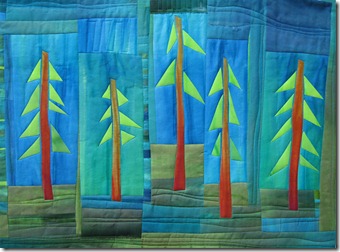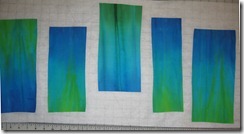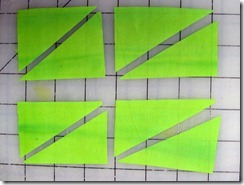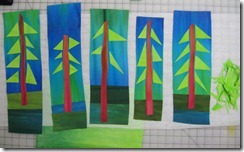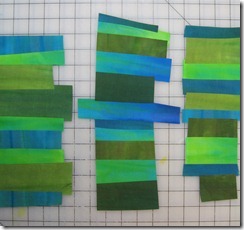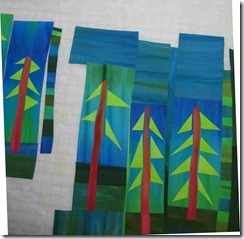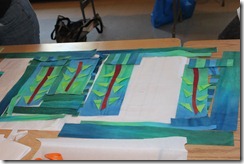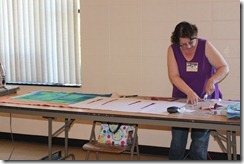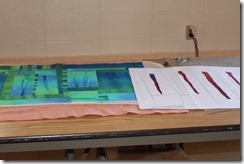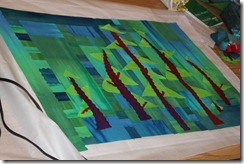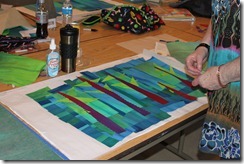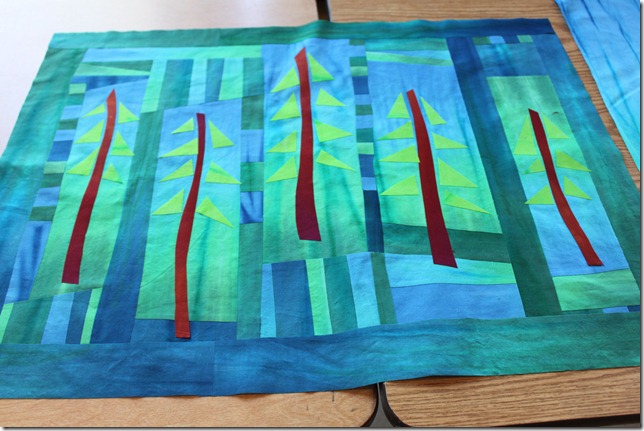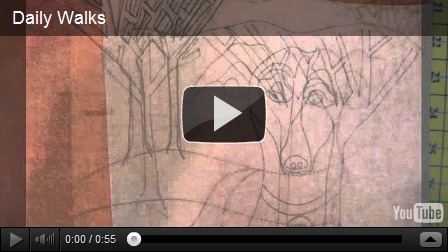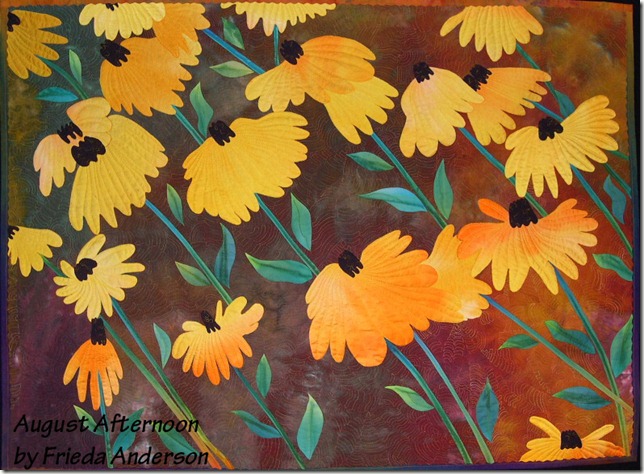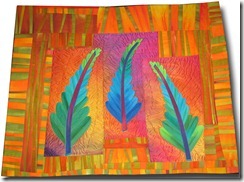This is what runs through my mind - What will make this jewel sing, will I like it when I am done?
Here are a few tips that help me along with that process.
1. I keep and use many small samples of “quilt sandwiches” under my sewing machine.
These let me very quickly and easily practice a design and “test” out my thread choices.2. I use clear plastic and a marker to try a design on the top of my quilt before I put it on the actual quilt itself.
I can quickly try something new and experiment with an idea.
But if you haven’t been able to take one of my classes (you could have me to your guild to teach), I thought I would talk about quilting the little pieces from my class Trumpeting Spring.
I really enjoy the process of machine quilting, and working on small quilts like the ones in Trumpeting Spring is the perfect place to practice your skills.
Like everything in life the more you do it the better you become, or at least you learn a few tricks of the trade.
So let’s start at the beginning.
- The first thing I do when I finish a quilt top is to put it up on one of my design walls and look at it for a while before I start to quilt it.
- I think about what would look good on it as far as the quilting goes.
- Once I am ready to start quilting I make a sandwich of it with my batting and backing fabric.
- I like to steam press my batting before I use it.
- I also like to use spray starch on the backing fabric before I sandwich it into a quilt.
It takes all the extra wiggle out of the background fabric if I starch it. It also slides easier on your sewing surface.
- If I am going to put a binding on it I don’t square it up until I am done quilting it. Why you might ask.
Well it is so much easier to quilt it if I have extra fabric to hold on to and places to run my quilting out.
I do however mark areas were it will be important to know what the final size is. That would be if I am putting a specific design in the area I want to make sure it fits and that it also doesn’t go outside the area I am planning on cutting away.
The quilting on this 16” x 20” pattern Daffodils, is very minimal. I like to do stitch in the ditch, right next to not on top of the design elements (design elements are the leaves, flowers etc.). I do this two ways.
For straight areas I use my feed dogs up and a straight stitch and let the machine run very smoothly up the edge of the straight line, like the areas of the stems.
For all the other curved areas I switch to a free motion foot and do the outline stitching free motion. When I do that I am sewing relatively slow, so that the needle stays right next to and close to the area I am working on.
Notice there is no background stitching on this quilt. It really didn’t need it. The fabric colors are so pretty why dilute that.
I did add in a very funky wiggly line to the border fabric. This is one of the few times that I use a marking tool.
I used a chalk pencil to mark that fun wiggly line so that I could follow it and also the line made sure it was in the area I know I was not going to cut off when I squared up the quilt.
I like using a chalk pencil for a simple design like this, because by the time you finish quilting it most of the chalk has disappeared.
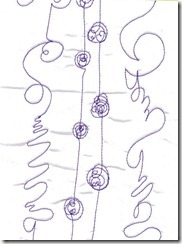
This is the page of that design from my book that each student gets in my Machine Quilting Class.


